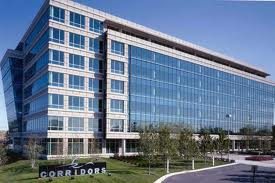 When business owners lease commercial office space, there is often more to consider in the way of expenses than just rent. One would like to think that a rent payment each month or year would cover all of the tenant’s costs, but this is usually not the case. Most office space tenants will have to pay an additional rent, such as operating expenses, under the lease terms. Here are some things which all commercial office space tenants must keep in mind when signing a new office space lease.
When business owners lease commercial office space, there is often more to consider in the way of expenses than just rent. One would like to think that a rent payment each month or year would cover all of the tenant’s costs, but this is usually not the case. Most office space tenants will have to pay an additional rent, such as operating expenses, under the lease terms. Here are some things which all commercial office space tenants must keep in mind when signing a new office space lease.
Business Owners Are Responsible for Rent Plus Operating Expenses
In addition to paying the set rent for the office space, commercial tenants will also pay operating expenses. These are items which the landlord must pay out in order to keep the building running. Some of these costs may include taxes, insurance, utilities, common area maintenance and more. Since these can be quite costly, it only makes sense to have the tenant share in some of the financial responsibility for operating features which they make use of as well.
The Costs Will Be Stated in the Lease
These operating costs may be few or many in number, depending on the individual commercial office, landlord, location and added features of the building itself. In order to have the right knowledge regarding what the tenant is responsible for and how much these items may cost on a monthly or annual basis, the operating expenses must be listed in the lease. The lease must be very detailed regarding what the tenant is required to pay, what the landlord will pay and how and when these payments are due.
Operating Expenses May Fluctuate Throughout the Lease Term
It would be nice if there were concrete numbers with regard to operating expenses, however, many times these operating expenses will fluctuate. In fact, most operating expenses will vary in amount but there is usually an average number for which the tenant can calculate approximately how much they will be paying in addition to the base rental payment. For most office space tenants, they will have to pay a portion of the operating expenses based on the amount of tenants in the office building, if more than a single tenant setting, and what the landlord requests in the lease. Although the portion of the operating expenses which the tenant needs to pay will be a set percentage, the cost of the operating expenses will still fluctuate.
The Best Way to Understand Operating Expenses Is With a Tenant Representative’s Help
Operating expenses can be a bit difficult to understand, especially if one is new to the commercial office space leasing arrangement. In order to have a good grasp as to what these operating expenses are and how much you will need to pay, having a tenant representative by your side during negotiations, lease signing and beyond will help. The tenant representative will thoroughly examine the operating expense clause and provide you with detailed information on what you will need to pay in addition to your commercial office space rent.




